Charles Rivers and Karen Loftin oversee $95,000 grant to reunite families
By lunch time one day last year, Charles Rivers had gone from being a supervised parolee to a welcomed professional in the same office building where hours before one individual held the power to revoke his freedom.
“As a parolee, you look at parole as an adversary,” Rivers said. “You go in thinking, ‘I got to go see this guy that could violate me at any time.’ ”
This particular day was noteworthy because it was his final office visit with his parole officer, known as a “PO.” And after that 8:30 a.m. appointment, the last thing Rivers wanted to be told upon his return to the South Side community center he runs is that he had to return downtown for a meeting with the bureau chief of parole.
“Nah. I was just there,” he remembers reluctantly telling his newly hired co-worker. “I’m not going back.”
But Karen Loftin, who had worked with Rivers for just over two months at that point, already knew he had come from his final PO meeting. She wanted to push him into his new capacity as the head of the center. “He was nervous, but I told him: ‘You’re going,’” she said firmly. “‘You’re a coordinator now.’”
Arriving back to the state building, Rivers remembers making eye contact with the guards who hours before made him remove his belt and empty his pockets. Parolees enter through metal detectors; professionals walk in.
“Karen just strolls through like she belongs,” recalled Rivers, who paused at the entrance. “Then a guard asked: ‘Are you with her?’” Muttering a hesitant “yes,” he was then gestured through.
The experience signaled a new era.
“This was the day I came out of the shadows,” he said.
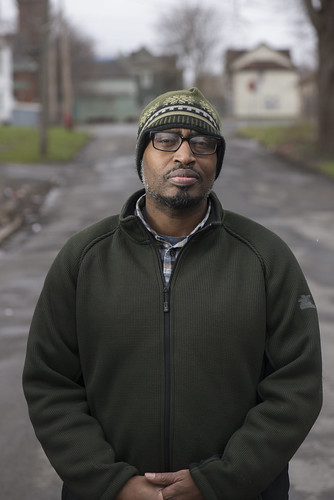
PILOT PROGRAM
For nearly three years now, Rivers has overseen PEACE, Inc.’s Emma L. Johnston Southside Family Resource Center. Rivers spent more than 19 years in prison, serving a total of three state stints. While his employer knew he had a criminal background, he never shared specifics.
When Rivers met with his PO that last time, relief should have been instant. But the nerve-wracking feelings of stress, intimidation and mistrust, even after hearing praise on all he had accomplished, he says, were hard to shake. For his five years on parole, he had remained careful and calculated with what he shared from his past. Slowly, year by year, he would open up more to those he worked with — and would accomplish more.
In those last two years before getting off parole, he took on a full-time role as coordinator of the center, located at 136 Dr. Martin Luther King West (formerly West Castle Street). He also purchased a home, earned degrees and mentored others.
He’s now been off parole for 10 months, since Father’s Day of 2017. Much of that time has been spent dedicated to helping other parolees through his work at PEACE. “I know what a parolee feels,” he said, “because I was on the other side of that desk, literally.”
This year PEACE, a nonprofit agency self-described to “empower people to thrive,” celebrates 50 years of service to the community, with one of its core components focused on re-entry support for people like Rivers fresh out of prison. In December 2016, PEACE received a boost to these efforts when the state awarded a $95,000 grant to launch a pilot program for family reunification. In addition to overcoming the transitional barriers to finding employment, adequate housing and attaining photo identification, ex-offenders struggle to reconcile with family members who may have spent years or even decades without them. Rivers says it takes time to reconnect, to learn what each person’s new role is, and to figure out what day-to-day life will be like moving forward. Re-entry programs are designed to help people meet and beat these challenges by allowing them to concentrate on adjusting to life on the outside. The grant allowed Rivers to focus on the needs of offenders’ family members; Loftin was hired in February 2017 to serve as the re-entry case manager.
 The grant — also awarded to two other cities — had no set guidelines, allowing each resource center to craft its own plan modeled off the successful New York City Housing Authority (NYCHA) initiative launched in 2013 called the Family Re-entry Pilot Program (FRPP).
The grant — also awarded to two other cities — had no set guidelines, allowing each resource center to craft its own plan modeled off the successful New York City Housing Authority (NYCHA) initiative launched in 2013 called the Family Re-entry Pilot Program (FRPP).
Syracuse Housing Authority (SHA) first learned about the opportunity to replicate the initiative here when Bill Simmons, executive director and president of the New York State Public Housing Authority Directors Association, heard a presentation on that pilot’s success. The overview given by Marta Nelson, executive director of the Governor’s Council on Community Re-Entry and Reintegration, showed how coordinated support could prevent recidivism, the tendency of an ex-offender to reoffend. Nelson used data from a 2016 study by the Vera Institute, which found none of the 85 participants in that initiative were convicted of a new crime since enrollment. The critical component, she stressed, was the additional partnership with parole and 13 nonprofit re-entry service providers to oversee carefully screened individuals allowed to return to their families in public housing.
New York state ranks ninth nationally in recidivism, according to a 2016 Bureau of Justice Statistics report, noting people released on parole are more likely to be imprisoned again not for new convictions, but for violating the conditions of their parole. According to a New York State Department of Corrections and Community Supervision (DOCCS) fact sheet, in 2012, 9,372 people were released from DOCCS facilities and placed on parole. Within three years of their release, more than half were reincarcerated — 83.7 percent for violating the conditions of their parole and 16.3 percent for committing a new crime.
In bringing the pilot to Syracuse, SHA partnered with PEACE to provide case management to maximize the initial pilot’s proven success. The final partner in Syracuse was parole (DOCCS). “This is the first time we’ve worked directly with parole,” Simmons said. Rivers also noted this has been the first face-to-face interaction between leadership in parole and staff at PEACE. DOCCS declined to speak on the record for this story.
The aim of the NYC pilot was to reconnect individuals with their families and provide stable housing after incarceration. Because many public housing authorities and private landlords have strict policies that exclude individuals with criminal records from being added to a lease, finding a safe and supportive place to live is a challenge.
When individuals apply for housing, the public housing authority runs a criminal background check of the applicant; everyone 16 or older who might also live there; any biological parent of children who will be living in the household, even parents who do not plan to live there and who are not part of the application. Rules governing who may be denied are very broad, allowing housing authorities to exclude people it believes will risk the health and safety of other tenants. Federal Law (42 USC § 13661(c)) gives public housing authorities the power to deny people based on criminal activity.
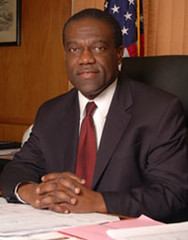
However, Simmons says SHA has a long history of embracing individuals with criminal backgrounds, citing a past re-entry job-training initiative, the Altamont Program, as one example. “We never flat out denied them housing,” he said, noting the U.S. Department of Housing and Urban Development (HUD) has two bright-line rules: you cannot live in public housing if you are a level-one sex offender or were convicted of producing methamphetamine. “Outside of that, it was up to the individual housing authorities to have their own policy. Traditionally, we were case by case already,” he said.
Simmons says SHA signed up because of the intensive case management services PEACE provides that also extend to family members, if they choose to participate. “Studies proved such support prevents recidivism,” he said, noting it to be a boost to what SHA was already doing.
ENROLEES JOIN
On March 3, 2017, Gov. Andrew Cuomo publicly announced the Family Reunification Pilot Program. In addition to Syracuse, Schenectady and White Plains authorities also launched pilots in partnership with Schenectady County Community Action Program, Inc. and the Westchester Community Opportunity Program (Westcop).
The goal of each pilot was to enroll 12 individuals by year’s end.
By the end of that March after media coverage aired, Syracuse started to enroll participants. Individuals were referred by DOCCS or found their way to PEACE by word of mouth. “Many times, a family member reached out to us from housing who knew of someone that was up for parole,” Loftin said.
Family members and tenants of SHA also learned about the pilot through direct outreach by Loftin, who engaged with residents shortly after being hired. By the end of February 2017, Loftin had already attended property management meetings, sat with residents at Pioneer Homes’ Coffee House and knocked on doors.
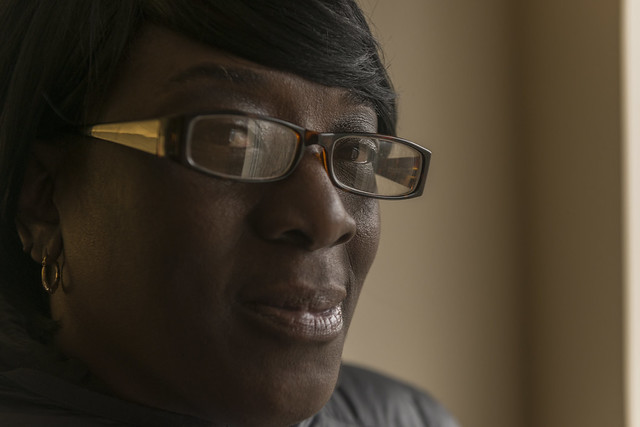
Once an individual was vetted by parole, the family member on the lease also had to agree to serve as host. Loftin met with both the potential participant and the lease-holder to go over the program, its requirements and rules. An agreement was signed and next sent to housing, which then conducted its own review. SHA had the final say if a participant could move into a unit or not.
The clearance of property managers was key, Loftin says, because they are privy to details that may not be part of someone’s official record. They often remember the individual and know the family situation they are returning to. “Syracuse is a small enough town that if the property manager knows the name, they’ll know any issues that could surround that family,” said Annette Abdelaziz, SHA grant procurement specialist whose main job function is ensuring residents stay housed.
 Currently six individuals are enrolled under the grant, having extended-stay guest status, which is a policy adjustment SHA made for enrollees of this initiative. The governor’s release stated that at the conclusion of the pilot program, successful participants could be added to a household’s lease. As of now, no one has been added. SHA says they will consider this after an enrollee has completed a two-year trial period successfully, with SHA determining the definition of success. “The trial period is a protective measure for the rest of the household,” Abdelaziz said. “If the reunification does not work out or the individual reoffends, as a guest, they can be asked to leave immediately, yet this would not jeopardize the rest of the household’s tenancy.”
Currently six individuals are enrolled under the grant, having extended-stay guest status, which is a policy adjustment SHA made for enrollees of this initiative. The governor’s release stated that at the conclusion of the pilot program, successful participants could be added to a household’s lease. As of now, no one has been added. SHA says they will consider this after an enrollee has completed a two-year trial period successfully, with SHA determining the definition of success. “The trial period is a protective measure for the rest of the household,” Abdelaziz said. “If the reunification does not work out or the individual reoffends, as a guest, they can be asked to leave immediately, yet this would not jeopardize the rest of the household’s tenancy.”
By the end of the grant period, PEACE had seen eight individuals enrolled and living in public housing. Two of those eight, however, dropped out of the program by December 2017 — one by choice, and one violated parole and was reincarcerated for a minor offense.
In White Plains, Westcop had four participants living in public housing by the end of 2017, with none added to a lease. The policy with housing there should have allowed one participant to be reviewed and considered, but because the grant period lapsed with no word if it would continue, a lease decision was stalled by the housing authority there, said case manager John Fuller, who oversees Westcop’s re-entry support.
 With the goal of 12 parolee participants falling short, the stipulation on requiring participants to live in public housing was lifted by the state, and the pilot period extended until grant money ran dry. In Syracuse, that allowed a continuation into mid-February 2018. In White Plains, that extended into April 2018, but with no set closing date because additional avenues of funding had been incorporated into its plan. For example, two of the 12 participants were veterans and funded through HUD-VASH (Veterans Affairs Supportive Housing) vouchers, an exception HUD allows for veterans with convictions.
With the goal of 12 parolee participants falling short, the stipulation on requiring participants to live in public housing was lifted by the state, and the pilot period extended until grant money ran dry. In Syracuse, that allowed a continuation into mid-February 2018. In White Plains, that extended into April 2018, but with no set closing date because additional avenues of funding had been incorporated into its plan. For example, two of the 12 participants were veterans and funded through HUD-VASH (Veterans Affairs Supportive Housing) vouchers, an exception HUD allows for veterans with convictions.
With removal of the requirement of living in public housing, Syracuse instantly jumped from six participants to 17, because of PEACE’s long-standing practice of supporting individuals’ re-entry. Rivers said he was able to pull participants from that pool and bring them into the pilot. Westcop also reached the goal of 12.
“We just did not have the volume,” said Fuller, adding that out of every parolee available during this time period, he found and enrolled all who met initial requirements. “I found the only four,” he said with a laugh. In total, public housing in White Plains has 360 families, he said, which is comparatively one-eighth the size of Syracuse. SHA has 2,340 units. “So, when the scope was broadened, the men we were serving in other capacities could now be included under the pilot,” Fuller said.
Loftin also felt the goal of 12 to be arbitrary. “That number was based on New York City figures, but our housing is very different,” she said. She sees more families with loved ones who are incarcerated living in Section 8 than public housing.
All three cities regularly stayed in touch over the course of the pilot, and staff in both Syracuse and White Plains noted that Schenectady’s initiative never seemed to take off. Staff with the Schenectady Community Action Program declined to speak for this story.
By March of this year, the state asked only Syracuse and White Plains to submit for a grant renewal. As of the end of April, State Department spokeswoman Mercedes Padilla said the department was in the process of assessing the overall success of each pilot, with hopes to complete the assessment in the coming weeks.
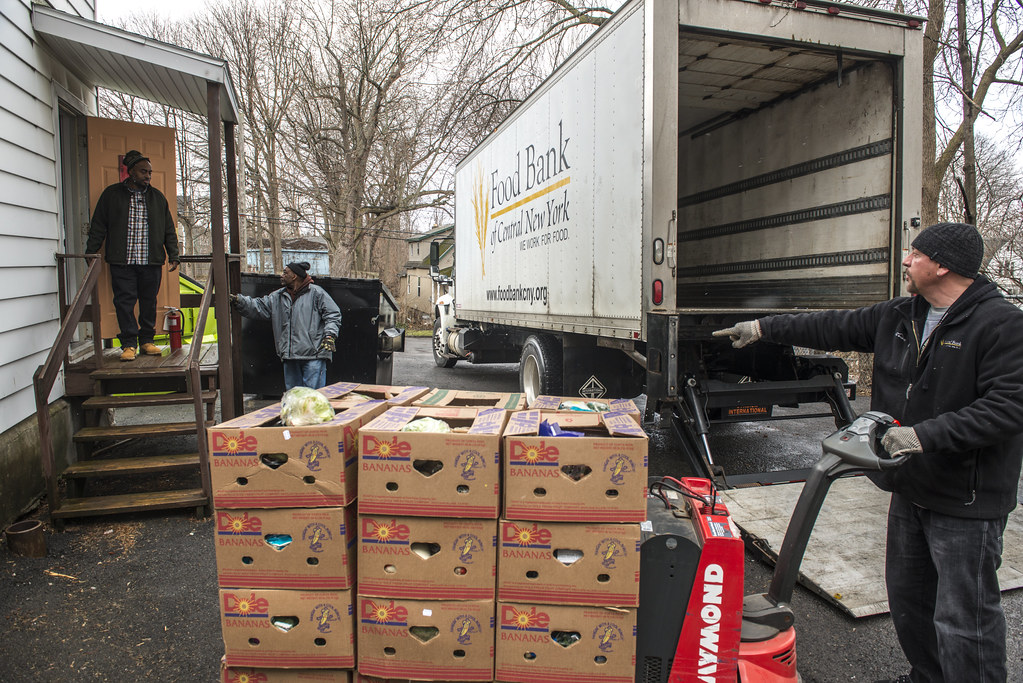
EARNING TRUST
If the grant was issued in December 2016, why did it take nearly four months to enroll participants?
In the weeks leading up to being released, prisoners are asked to provide an address. Typically, they give a family member’s, spouse’s or partner’s home address, and if there’s no family here in Syracuse, they’ll often end up at the Rescue Mission.
 When released, they’re given $40 and a bus pass to return home. Rivers describes this as “the symbolic 40 acres and a mule.” Next, they have 24 hours to report to parole, where an assessment of their mental health and level of risk to the community is conducted.
When released, they’re given $40 and a bus pass to return home. Rivers describes this as “the symbolic 40 acres and a mule.” Next, they have 24 hours to report to parole, where an assessment of their mental health and level of risk to the community is conducted.
An individual’s most urgent needs during the transition are housing, health and income, says Bruce Western, author of “Homeward: Life in the Year After Prison.” The book, scheduled to be released May 15, examines what individuals face upon returning home through detailed accounts from more than 100 individuals on probation. Researchers on Western’s team also spoke with family members.
 In these in-depth interviews conducted five separate times along the span of a year, participants in the book’s study shared that probation officers chiefly focus on compliance and monitoring. “For most, we found that there was no process with probation to develop a plan and tackle priorities,” Western said in a phone interview, noting only a few went above that level to also discuss with a probationer goals for the year ahead. “There is a deficit of that kind of support.”
In these in-depth interviews conducted five separate times along the span of a year, participants in the book’s study shared that probation officers chiefly focus on compliance and monitoring. “For most, we found that there was no process with probation to develop a plan and tackle priorities,” Western said in a phone interview, noting only a few went above that level to also discuss with a probationer goals for the year ahead. “There is a deficit of that kind of support.”
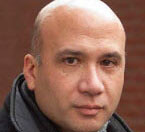
Western calls it an unmet need right now.
Rivers and Loftin would agree. When working with their clients, they first share: “We are not your parole officer.”
It helps.
“After telling them that, the air clears,” Rivers said. “It’s like a big sigh of relief, and in that meeting, we can tell tension has left the room.”
In describing a successful model, Western, who also teaches sociology at Harvard University and is co-director of the Columbia University Justice Lab, says case managers would engage parolees for long periods of time, serving as an advocate. “Coercive treatment is a difficult model,” Western said. “This type of role should involve noncriminal justice actors that don’t wield the threat of arrest and revocation. People view it as a continuation of surveillance and control, and many times we heard from respondents that ‘the system just wants to make money off of us.’”
For this pilot, gaining such trust took time.
“People returning home have a lot of choices,” Fuller added, noting in recent years, more re-entry programs are being offered. “Now they can shop programs. So they are looking for who is sincere.”
Thus, his passion for the work, he believes, makes the pilot stand out. “If they can feel it, they will be willing to work with you,” he said, stressing consistency is key. “You have to be able to follow up and deliver something tangible.” He said if released offenders trust the case manager, they’ll pass on the referral to others.
HARVESTING HOPE
Once enrolled, Fuller describes the majority of his new participants exhibiting what he terms “re-entry malaise,” where people struggle with their self-worth, settling for their current limitations.
In an open group discussion with Syracuse participants in February, one man shared that “you know you are doing your best, but your best is never enough.”
 Later, Rivers paused, locking eyes with another grant participant. “We said one day we’d be out,” he said while maintaining eye contact. Both walked the yard together and lived in the same cell block, at various prisons, at different points in their pasts. “On those walks, we said we’d have a second chance, and that time is now,” Rivers concluded. Next he encouraged the men to share their personal stories in order to illustrate to others what barriers they face in their transition from incarceration to free society.
Later, Rivers paused, locking eyes with another grant participant. “We said one day we’d be out,” he said while maintaining eye contact. Both walked the yard together and lived in the same cell block, at various prisons, at different points in their pasts. “On those walks, we said we’d have a second chance, and that time is now,” Rivers concluded. Next he encouraged the men to share their personal stories in order to illustrate to others what barriers they face in their transition from incarceration to free society.
That discussion was open to all the participants under the grant, but those most open to revealing their past and what struggles they face today were older, explaining they’ve each had years to think on their past mistakes. Those open to going on record and pairing with a reporter over the next three months ranged in age from mid-30s to late 60s. Their personal accounts contributed to this report on the year-long pilot trial. None currently living in Syracuse public housing attended the open discussion or volunteered to speak to a reporter.
Re-entry support is not all hand-holding, the case managers note. There is a spectrum with some requiring help as minimal as a bus pass to make a job interview. But for others, support offered by a case manager could be in tackling their staggering issues of self-doubt when rejections seem to be at every turn — “no” from a landlord; “no” to callbacks on potential jobs; even “no” to requests to reconcile with an estranged child.
For Loftin, patience is what she stresses to each of her clients. “It takes time to get back to a solid foothold,” she tells them. “But when parolees come home from prison, they want everything back immediately.”
She adds that society tells them the same thing: Be productive now.
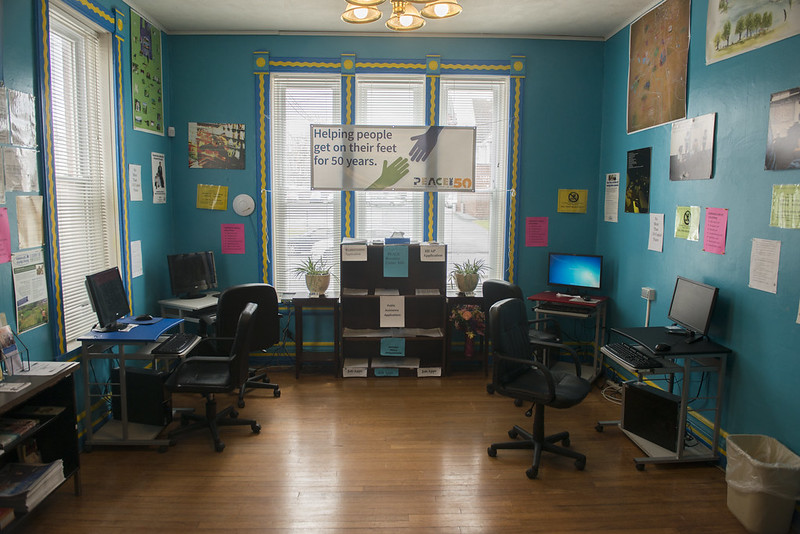
“That’s where the frustration comes,” Loftin said of her clients’ feelings, “and as a case manager that’s where I come in and can be advantageous and tell them ‘listen, it’s not going to happen overnight.’”
It takes time.
Lots of time.
Momentum grows slowly, incrementally.
Yet before even tackling their immediate needs, Loftin first wants to know what parole has mandated. “Are they meeting their parole conditions?” she asks, “because that is our top priority. Whatever the commissioner said for you to do upon release — education, drug treatment, counseling — everything else has to be met around those.”
She gives an example. Several clients wanted jobs because they felt having money in their pockets was empowering, but if assigned by parole to be in a substance-abuse program four days a week, you first have to complete the program, she says.
This works as good discipline, discouraging hopes of the quick fix. “That hustling mindset,” she began, “has to be changed. While those actions may be quick money, they come with greater consequences. Let that patience have its perfect work to get a greater reward.”
STARTING AGAIN
Fuller has also found this to be a population full of fear. “They are afraid to fail, afraid of rejection,” Fuller said. Some he has worked with have such high levels of anxiety and post-traumatic stress that they aren’t mentally ready for a group training. Even scheduling a meeting during peak office hours when foot traffic is high is too overwhelming.
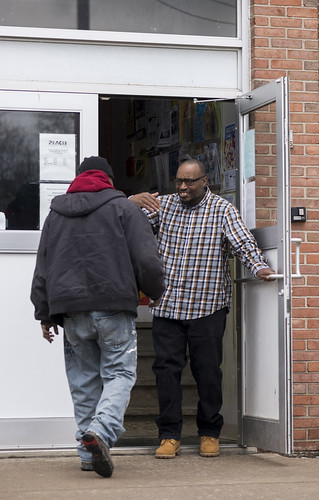
In substance-abuse counseling, there’s a common saying. “Recovery is the bridge back to life,” Fuller said. “But if you’ve never had much of a life, there’s really no point of reference for what you’re trying to return to. You never had glory; you never had direction; you never had good counsel.”
Deep trauma was the most surprising factor Western learned in the process of interviewing subjects for his book. “The extreme level of violence people have had to contend with over a lifetime,” he said, “may seem obvious, but we learned that nearly everyone we spoke to had been seriously victimized by violence.”
He noted many had done very violent things themselves, but they also had serious histories of victimization. Despite this, he said, many displayed resilience.
Fuller says in an honest and loving way, a major component of his role is teaching individuals how to find value in themselves. He said this is something they’ve been missing. “For some — all of their lives.”
Many are scared to death, he added: Scared to go to that job interview, to try, for fear of failing yet again. “Then when we get that spark, we fan it,” Fuller said with enthusiasm. He noted that success isn’t always employment. “Sometimes success is getting a guy to BOCES to complete a basic course, because sometimes we have to set up wins for them in order to grow their confidence and show them what’s possible.”
Still he views this as a collaborative effort, not simply him telling them what to do. “They have to be invested,” he said “… be part of their own rescue.”
UNCERTAIN FATE
Even if the grant is not renewed, Rivers says, PEACE will continue its re-entry efforts. “This is something I’ve done since I started and something we were doing before the grant,” he stressed. “The support I offer is not dependent on this grant continuing.”
 Neither is the passion the others in this field feel. Loftin, who spent over a decade in prison and has been off parole for 16 years, says serving as a mentor is ingrained to her core. Rivers’ and Loftin’s past experience, they say, helps to connect with their clients and to show what is possible in the long term. The pair’s combination of having both experienced prison makes them uniquely qualified for this work, making their role instrumental in the grant’s success. As well, Rivers has earned his master’s degree in social services, while Loftin is pursuing her master’s.
Neither is the passion the others in this field feel. Loftin, who spent over a decade in prison and has been off parole for 16 years, says serving as a mentor is ingrained to her core. Rivers’ and Loftin’s past experience, they say, helps to connect with their clients and to show what is possible in the long term. The pair’s combination of having both experienced prison makes them uniquely qualified for this work, making their role instrumental in the grant’s success. As well, Rivers has earned his master’s degree in social services, while Loftin is pursuing her master’s.
For housing, grant continuation is a major factor in future approval of a tenant with a criminal background. “A participant’s willingness to participate in case management services is an important indicator of their commitment to change,” Abdelaziz said.
Currently, three potential enrollees serving out their sentences are in the pipeline to join family in public housing when up for parole. SHA says no decision to approve their move in will be made until a release date is near.
The stall is due to the uncertainty of the grant. If the grant is not renewed, SHA staff would not confirm if their efforts will cease, noting that decisions on individual approval will continue on a case-by-case basis.
“While we want to ensure the case management will be there,” Abdelaziz said, “we won’t tell people ‘no’ yet.”
Ashley Kang, The Stand’s director, completed this story as part of her role as a 2018 John Jay/H.F. Guggenheim Justice Reporting Fellow. Fellows, chosen from a wide pool of applicants, were selected based on editors’ recommendations and investigative reporting projects underway.
This piece is set to additionally be published in The Crime Report, a news service covering the diverse challenges and issues in criminal justice.
 The Stand Syracuse
The Stand Syracuse


